News 6/2/10
From Rebecca Bloomwood: “Re: New Jersey hospitals. Big bucks coming and going for EMRs.” A New Jersey paper runs some interesting hospital EMR numbers. Saint Peter’s University Hospital spent $50 million for McKesson Horizon Clinicals, but expects to get $40 million back in ARRA money. Hunterdon Medical Center went with NextGen (for a practice-based EMR, I assume) and expects to get $30 million from federal taxpayers.
From Donna Reed: “Re: consulting. I was a consultant, but took an FTE position due to family circumstances. I want to get back into consulting, but am running into a brick wall with Epic’s partners. Should clients sign these contracts? Should this type of partnership even be entertained?” I’ve never understood Epic’s firm stance on who partners and customers can hire (not to mention which companies former employees can work for). I doubt any of the agreements would be enforceable if legally challenged, but Judy’s got a lot more lawyer money than the average job seeker.
Monday’s post drew a lot of reader comments, some of them heavier on emotion than facts. I’ll be quicker to delete those comments in the future since they just waste everybody’s time. I doubt that will be necessary since I know some/most of the commenters from their previous posts and they have always been passionate, but with sound reasoning and respectful demeanor. I’ll write this one off as a post-holiday, back-to-work-dammit aberration.
A clarification about “usability” – it is not a feel-good, generic term for just asking users how they like an application. It’s an objective science that measures everything from eye movements to keystroke times as users interact with software in a lab setting, also including tests of how well and how quickly users perform specific task assignments. I’m no expert, but I’ve attended a couple of workshops offered by a usability professional organization, so I would differ with anyone who says software usability is subjective, lacks rigor, or favors one application over another. I was hoping to get a usability expert to write an article on that very topic, but I haven’t worked that out yet.
Listening: Sonata Arctica, more of that sweeping, operatic Finnish progressive metal that I love. It might be time for me to visit Helsinki again.
University of Missouri gets a $6.8 million ONCHIT grant to fund the Missouri Health Information Technology Assistance Center, but stresses that despite overlaps with its Tiger Institute partnership with Cerner, the Regional Extension Center won’t favor Cerner when it recommends EMR vendors to physician practices.
Speaking of MU Health Care, its former CIO George Carr (above) is named CIO of BryanLGH Health System (NE). Hospital operator HMA names Ken Chatfield as CIO. And in Abu Dhabi, former Karmanos Cancer Institute (MI) CIO George Yacoub is named CIO of Hopkins-managed Corniche Hospital.
Point-of-care communications technology vendor Voalté is named as an Up and Coming healthcare IT company by Healthcare Informatics.
For the reader obsessively charting HIStalk’s stats: the summer slowdown always starts in May, so the numbers dropped a little with 79,537 visits and 110,111 page views. That’s still 16% higher than May 2009. The verified e-mail subscriber list is at 5,574. Thanks for being one of the readers who made those numbers possible – I really appreciate it.
Speaking in Japan, GE CEO Jeff Immelt urges that country to “dominate healthcare information technology and home healthcare devices.” You’d think their taxpayers had bailed out GE Capital instead of us. He was also unusually frank in saying that “more money has been wasted on [healthcare] information technology than has been saved by using it.” He didn’t say, but much of that waste no doubt involved the elephant’s graveyard of once-good HIT applications that have withered under GE’s smothering bureaucracy. ADDENDUM: per a GE spokesperson, the company did not take TARP funding, although some of its debt was guaranteed by the federal government. I always refer to this Washington Post article, How a Loophole Benefits GE in Bank Rescue, which describes the special treatment GE received using what the article calls a loophole in the Temporary Liquidity Guarantee Program.
MEDecision will launch its Alineo 3.0 care management platform, which includes a new behavioral health utilization model, at AHIP next week.
Our friends at ONCHIT are looking for someone who’s smart, creative, and knows HIT (especially emerging technologies) to lead its innovation programs. I’m encouraged by all the folks who have taken pay cuts to work in federal service, so if you’ve ever thought about it, this sounds like a pretty cool job.
UPMC paid its CEO more than $5 million last year, but CIO Dan Drawbaugh did OK too, taking home $1.335 million. Surely that’s an all-time record for any non-profit’s CIO, not just in healthcare.
Australia’s Medicare program, one month away from mandatory implementation of a national patient identifier, has yet to sign a contract with a vendor to create connectivity between EMRs and the identifier service. They have a pretty good excuse: the bill hasn’t been passed yet and debate doesn’t even start for two weeks.
Emdeon announces a free Emdeon Office solution that allows providers to electronically submit workers’ compensation and related attachments.
Just the kind of headlines Harlem Hospital didn’t need after its “unread echocardiograms” fiasco: a unconscious woman being treated in its ED after being slipped a date rape drug claims she awakened to find a medical intern groping her. She confronts him afterward, at which time he admits pawing her but then asks her out on a date, not realizing that she is secretly recording their conversation. He’s been suspended with pay while awaiting sex abuse charges.
HERtalk by Inga
From Evelyn Castle: “Re: eHealth Nigeria. I read the short article you posted about me and eHealth Nigeria. I wanted to thank you for the publicity. If you wish to keep updated on the project, you can sign up for our mailing list on our Web site. We will also be blogging throughout the trip. Thanks for your interest.” Evelyn is a UC Santa Cruz college student who helped create Nigeria’s first EMR and is heading back to the county later this year automate several hospitals and clinics. As Mr. H pointed out, she’s my new hero even if she did shame me with her selfless accomplishments.
Emdeon submits formal comments to the DEA to support e-prescribing of controlled substances, but cautions that it will take the industry time to make the necessary software modifications.
US Oncology announces its new iKnowMed platform for community oncologists. US Oncology purchased the company iKnowMed in 2004, developers of an oncology-specific EHR, and has added RCM and inventory management components.
TELUS announces that its health space is now available for licensing by healthcare organizations. I didn’t understand the term “health space”, so I did a bit of surfing on the TELUS site (they are a sponsor, so I figured I really should understand what they do). TELUS Health Solutions is a Canadian company that offers a number of software applications, including EHR, claims management, and scheduling, plus the health space PHR.
Healthcare South (MA) selects Allscripts EHR/PM for its nine pediatric and family practice offices.
Trinity Muscatine (IA) takes its ED live on electronic medical records as part of the hospital’s $4.7 million EMR initiative.
In an article that calls Dell the “biggest player” in HIT, industry analysts and Dell execs discuss the company’s market approach to the industry. After acquiring Perot, Dell leaned on Perot’s expertise to develop ways to reduce HIE costs and to sell its technology to a broader segment of the market. Dell is now seeing increased success marketing to small and mid-size hospitals and their network of affiliated doctors implementing EMRs.
Apple says it has sold a whopping 2 million iPads since its launch two months ago. Impressive, especially when you consider that just last week it began selling the units in Canada, Japan, Europe, and Australia. In January, analysts estimated Apple would sell between 178,000 and 778,000 iPads monthly.
Emerging Healthcare Solutions is developing a new iPhone app that will automatically call users at the precise time they need to take medications, targeting seniors. I love the idea and think it could be a big hit, but, I suspect many seniors will need help from a tech-savvy friend or relative to set it up. And if the patient is not interested in using the iPhone for any of its other sexy apps, the $10 a month on top of AT&T’s monthly data fee ($30?) may be a bit too steep for the fixed income crowd.
A jury rules in favor of NYU Langone Medical Center in the case involving the male transplant patient who died of uterine cancer after a kidney transplant. During the medical malpractice trial, it was revealed that the donor’s cancer was not detected until after her autopsy. Furthermore, the hospital argued that their male patient actually developed a form of immune-system cancer as a result of the transplant, and did not die of uterine cancer.
A study finds that a telehealth system combining remote patient monitoring with education support tools reduced hospitalization time and improved the quality of life of patients with severe heart failure.
Here’s a lawsuit that’s right up that with McDonalds serving its coffee hot. A California woman sues Google for giving her poor walking directions from Google Maps. The woman pulled up the directions on her BlackBerry and was directed to walk on a route without sidewalks and with cars moving at high speeds. She was hit by a car and is suing Google for over $100,000 in medical expenses for its “careless, reckless and negligent providing of unsafe directions.”


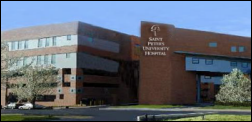



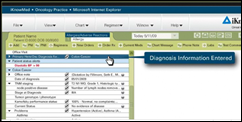







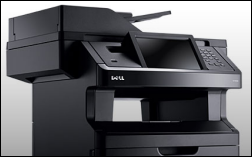

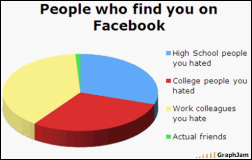
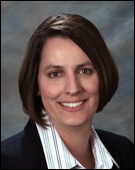


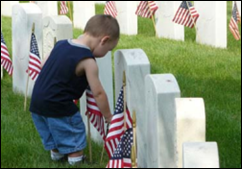


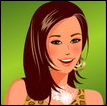

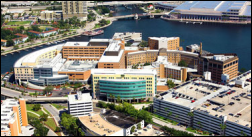

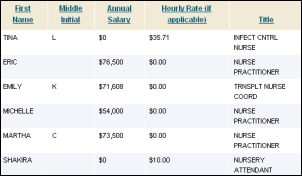











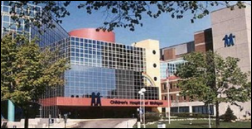







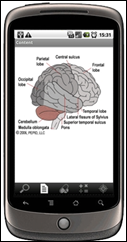




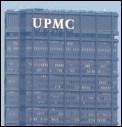
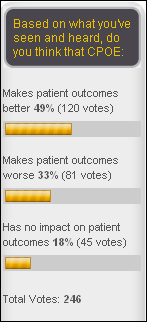







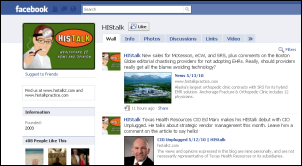

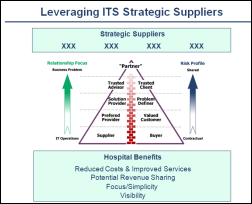

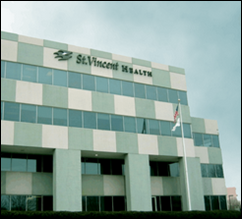















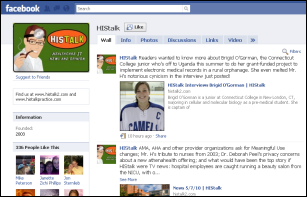

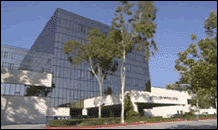




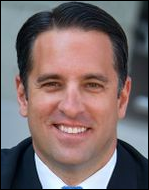


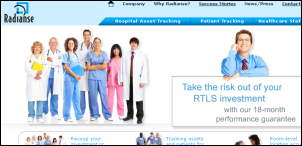


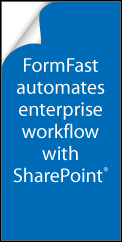

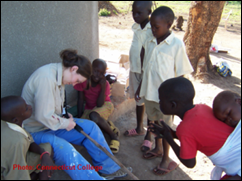







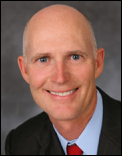






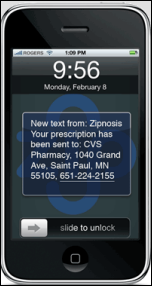



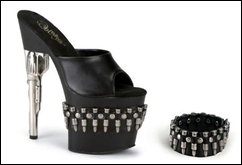

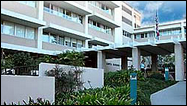
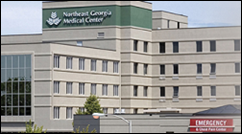

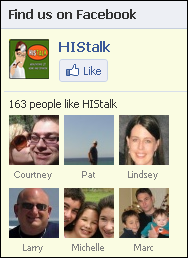
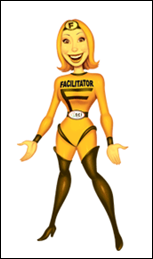
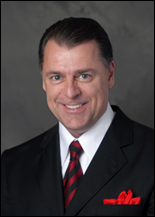





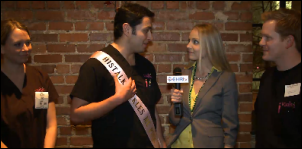

Merry Christmas and a Happy New Year to the HIStalk crowd. I wish you the joys of the season!